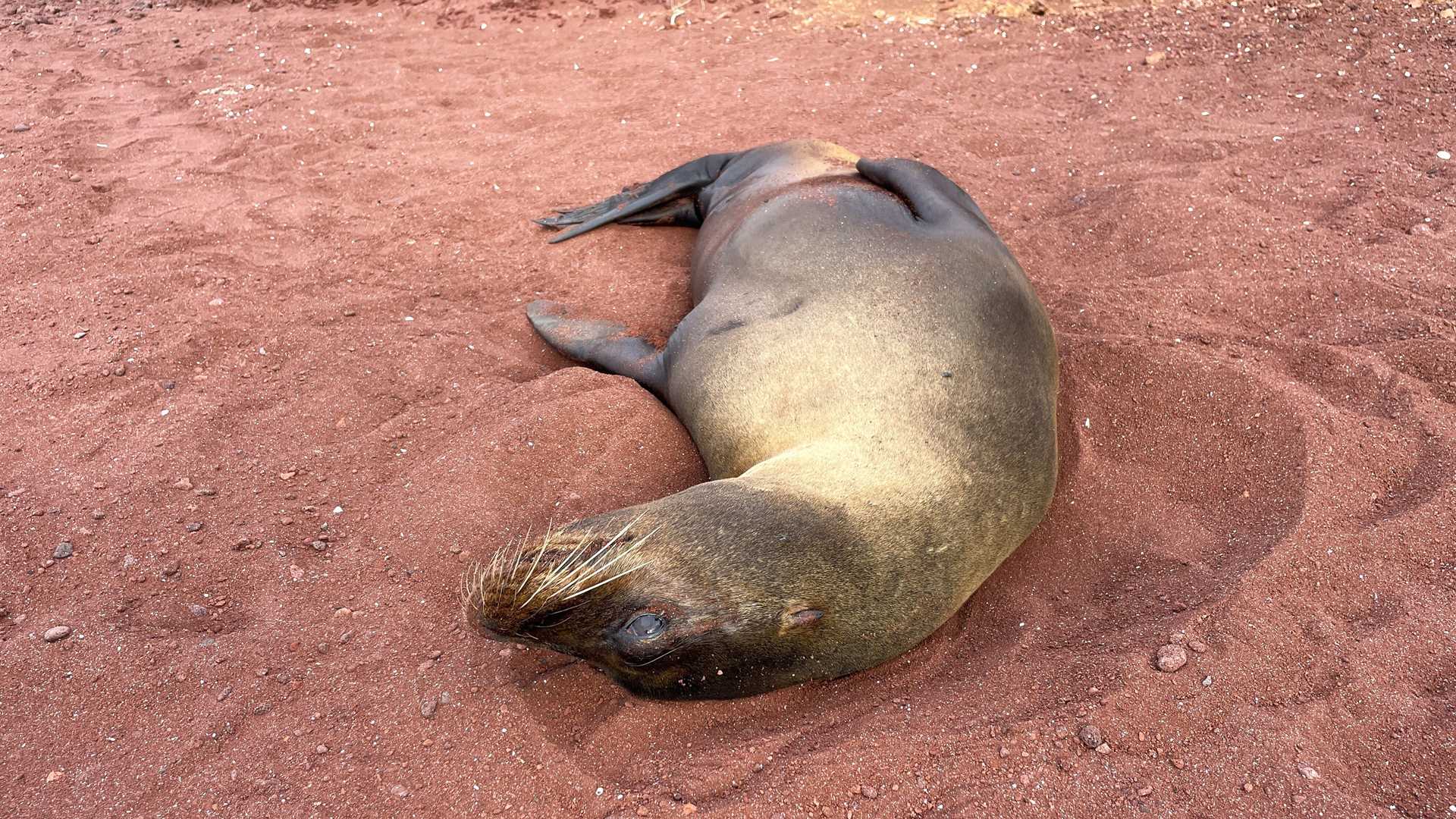Today is the first full day of our expedition, and our first visitors’ site is North Seymour Island. North Seymour Island is a small, uplifted landmass in the Galapagos archipelago. It is a haven for wildlife enthusiasts and nature lovers. This geological wonder was formed by a series of uplifts. It offers visitors a unique opportunity to witness an extraordinary variety of flora and fauna in its natural habitat. The island’s arid landscape, characterized by prickly pear cacti and palo santo trees, contrasts sharply with the azure waters that surround it.
As we walked along the island’s trails, our guests experienced intimate encounters with the abundant wildlife. North Seymour is renowned for its populous colonies of blue-footed boobies and frigatebirds, and today we saw so many of them. The island is also home to the iconic Galapagos land iguanas, often seen lazily basking in the sun or foraging among the cacti.
The afternoon offered us our very first snorkeling outing, where we had the opportunity to try out our gear and take a dip in the Pacific Ocean. Later in the afternoon, we disembarked for a relaxed stroll along the brackish water lagoon located behind the beach. A small flock of flamingos arrived at the lagoon while we were there. Commonly known as American flamingos or Galapagos flamingos, these flamingos are a distinct subspecies found in the Galapagos Islands. The stunning birds are characterized by vibrant pink plumage, long and graceful necks, and their distinctive, downward-curving bills. They use these bills to filter feed on small invertebrates, algae, and crustaceans in shallow lagoons and tidal flats. Despite being one of the rarest flamingo species in the world, with a population of only a few hundred individuals, we were lucky enough to see a few arriving just in time!







